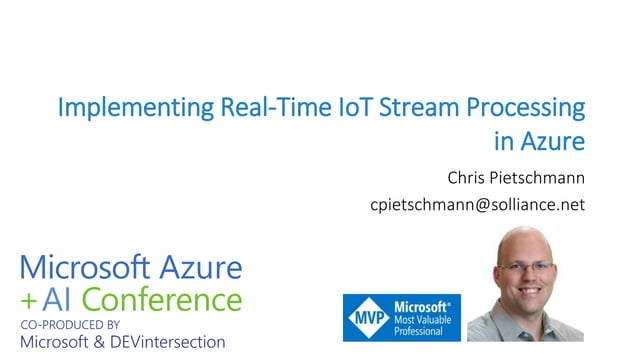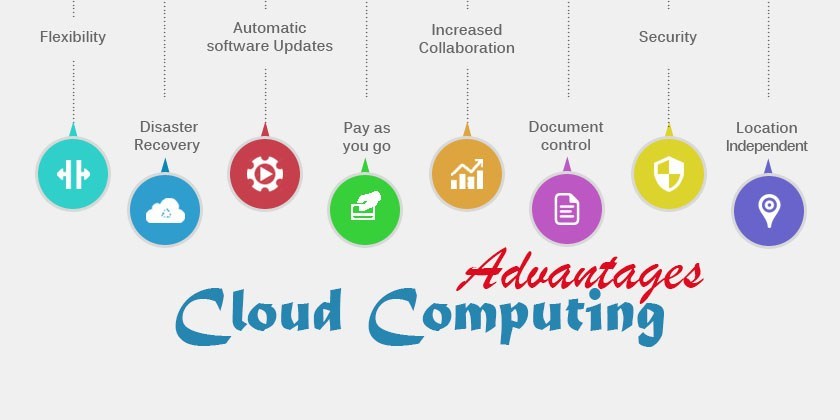The Advantages of Cloud-Based Streaming and Real-Time Processing
Cloud-based streaming and real-time processing solutions have gained significant traction in recent years, thanks to their numerous benefits. These technologies enable organizations to process and analyze large volumes of data quickly and efficiently, leading to improved decision-making and operational efficiency. Here are some of the key advantages of using cloud-based solutions for streaming and real-time processing:
- Scalability: Cloud-based solutions offer unparalleled scalability, allowing organizations to easily handle fluctuations in data volume. This is particularly useful for businesses that experience spikes in traffic during certain times of the day or year.
- Cost-effectiveness: Cloud-based solutions eliminate the need for expensive hardware and maintenance costs, making them a more cost-effective option for many organizations. Additionally, cloud providers often offer pay-as-you-go pricing models, allowing businesses to only pay for the resources they use.
- Ease of use: Cloud-based solutions are typically easy to set up and use, with intuitive user interfaces and minimal configuration requirements. This reduces the need for specialized skills and training, allowing businesses to get up and running quickly.
- Speed: Cloud-based solutions offer fast data processing and analysis, enabling businesses to make real-time decisions based on up-to-the-minute data. This is particularly useful for applications such as fraud detection, predictive maintenance, and live video streaming.
- Integration: Cloud-based solutions can easily integrate with existing systems and applications, enabling businesses to leverage their existing data and infrastructure. This reduces the need for costly and time-consuming data migration projects.
In summary, cloud-based streaming and real-time processing solutions offer numerous advantages over traditional on-premises solutions. By leveraging the scalability, cost-effectiveness, ease of use, speed, and integration capabilities of cloud-based solutions, businesses can gain a competitive edge in today’s fast-paced digital landscape.

Key Considerations for Streaming and Real-Time Processing in the Cloud
When choosing a cloud-based streaming and real-time processing solution, there are several key factors to consider. These include data security, compliance, and integration with existing systems. Here’s a closer look at each of these considerations:
- Data security: Ensuring the security of sensitive data is a top priority for any organization. Cloud-based streaming and real-time processing solutions should offer robust security features, such as encryption, access controls, and activity monitoring. Additionally, businesses should ensure that their cloud provider complies with relevant data protection regulations, such as GDPR or HIPAA.
- Compliance: Depending on the industry, businesses may be subject to specific compliance requirements. Cloud-based streaming and real-time processing solutions should be able to meet these requirements, such as data residency or data sovereignty regulations. Businesses should also ensure that their cloud provider has appropriate certifications, such as SOC 2 or ISO 27001.
- Integration: Cloud-based streaming and real-time processing solutions should be able to integrate seamlessly with existing systems and applications. This includes data sources, such as databases or message queues, as well as business intelligence tools or data analytics platforms. Integration should be easy to set up and maintain, with minimal configuration requirements.
In addition to these considerations, businesses should also evaluate the scalability, cost-effectiveness, and ease of use of the cloud-based streaming and real-time processing solution. By carefully evaluating these factors, businesses can choose a solution that meets their specific needs and delivers optimal results.

How to Implement Streaming and Real-Time Processing in the Cloud
Implementing a cloud-based streaming and real-time processing solution can provide numerous benefits, including scalability, cost-effectiveness, and ease of use. Here’s a step-by-step guide on how to implement this solution:
- Select a provider: The first step is to choose a cloud-based streaming and real-time processing provider. Some popular options include Amazon Web Services (AWS), Microsoft Azure, and Google Cloud Platform (GCP). When selecting a provider, consider factors such as data security, compliance, and integration with existing systems. Additionally, evaluate the provider’s features, pricing, and performance.
- Set up the infrastructure: Once you’ve selected a provider, the next step is to set up the infrastructure. This includes creating a cloud account, setting up security features, and configuring the data pipeline. The specific steps will vary depending on the provider and the specific solution you choose. Be sure to follow the provider’s documentation and best practices to ensure a successful implementation.
- Integrate with existing systems: Cloud-based streaming and real-time processing solutions should be able to integrate seamlessly with existing systems and applications. This includes data sources, such as databases or message queues, as well as business intelligence tools or data analytics platforms. Integration should be easy to set up and maintain, with minimal configuration requirements.
- Test and iterate: Once the infrastructure is set up and integrated with existing systems, it’s important to test the solution to ensure it’s working as expected. This includes testing the data flow, performance, and security features. Be sure to iterate and optimize the solution based on feedback and performance metrics.
By following these steps, businesses can implement a cloud-based streaming and real-time processing solution that meets their specific needs and delivers optimal results. It’s important to choose a provider that offers robust security features, compliance with relevant regulations, and easy integration with existing systems. Additionally, businesses should test and iterate the solution to ensure optimal performance and data quality.

Popular Cloud-Based Streaming and Real-Time Processing Providers
When it comes to cloud-based streaming and real-time processing, there are several popular providers to choose from. Each of these providers offers a range of features, pricing, and performance options to meet the needs of different businesses. Here’s a comparison of some of the most popular providers:
- Amazon Web Services (AWS): AWS is a leading provider of cloud-based services, including streaming and real-time processing. Its Kinesis platform offers real-time data processing, analytics, and visualization. AWS also provides robust security features, such as encryption and access control, to ensure data privacy. Pricing is based on usage, making it a cost-effective option for businesses of all sizes.
- Microsoft Azure: Microsoft Azure is a cloud computing platform that offers a range of services, including streaming and real-time processing. Its Azure Stream Analytics platform enables real-time data processing and analytics, with integration with other Azure services, such as Power BI and Azure Functions. Pricing is based on the number of streaming units used, making it easy to budget for.
- Google Cloud Platform (GCP): GCP is a cloud-based platform that offers a range of services, including streaming and real-time processing. Its Cloud Pub/Sub platform enables real-time data streaming and processing, with integration with other GCP services, such as BigQuery and Cloud Functions. Pricing is based on usage, making it a cost-effective option for businesses of all sizes.
When choosing a provider, it’s important to consider factors such as data security, compliance, and integration with existing systems. Additionally, businesses should evaluate the provider’s features, pricing, and performance to ensure a successful implementation. By choosing a reputable provider with robust security features and easy integration options, businesses can

Real-World Applications of Cloud-Based Streaming and Real-Time Processing
Streaming and real-time processing in the cloud have a wide range of applications across various industries. These technologies enable businesses to process large volumes of data quickly and efficiently, providing valuable insights and improving decision-making. Here are some real-world applications of cloud-based streaming and real-time processing:
- Fraud Detection: Cloud-based streaming and real-time processing can help businesses detect fraudulent activity in real-time. By analyzing data streams, such as transactional data, businesses can identify suspicious patterns and take immediate action to prevent fraud. For example, financial institutions can use these technologies to detect and prevent credit card fraud, while e-commerce businesses can use them to detect and prevent account takeover fraud.
- Predictive Maintenance: Cloud-based streaming and real-time processing can help businesses predict and prevent equipment failures by analyzing data streams from sensors and other devices. By identifying patterns and anomalies in the data, businesses can schedule maintenance and repairs before equipment fails, reducing downtime and maintenance costs. For example, manufacturing companies can use these technologies to monitor the performance of machines and predict when maintenance is required, while transportation companies can use them to monitor the condition of vehicles and prevent breakdowns.
- Live Video Streaming: Cloud-based streaming and real-time processing can help businesses deliver high-quality live video streams to large audiences. By processing and analyzing video data in real-time, businesses can provide personalized experiences, such as targeted ads and recommendations. For example, sports broadcasters can use these technologies to deliver live streams of games and events, while social media platforms can use them to deliver live streams of user-generated content.
These are just a few examples of how cloud-based streaming and real-time processing can benefit businesses. By enabling the processing of large volumes of data quickly and efficiently, these technologies can provide valuable insights, improve decision-making, and enhance customer experiences. When implementing these technologies, it’s important to consider factors such as data security, compliance, and integration with existing systems. By choosing a reputable provider and following best practices, businesses can ensure a successful implementation and take advantage of the many benefits of cloud-based streaming and real-time processing.
Best Practices for Streaming and Real-Time Processing in the Cloud
Streaming and real-time processing in the cloud offer numerous benefits, including scalability, cost-effectiveness, and ease of use. However, to ensure a successful implementation and optimal results, it’s important to follow best practices. Here are some best practices for using cloud-based streaming and real-time processing:
- Monitor Performance: Monitoring the performance of your cloud-based streaming and real-time processing solution is crucial to ensure it’s working efficiently and effectively. Use monitoring tools to track metrics such as data throughput, latency, and error rates. This will help you identify and address any issues before they become major problems.
- Optimize Data Flow: Optimizing data flow is essential to ensure your cloud-based streaming and real-time processing solution works efficiently. Use data flow optimization techniques such as data compression, data partitioning, and data caching. This will help reduce network latency and improve data processing times.
- Ensure Data Quality: Ensuring data quality is crucial to ensure accurate and reliable insights from your cloud-based streaming and real-time processing solution. Use data quality tools to monitor data accuracy, completeness, and consistency. This will help you identify and address any data quality issues before they impact your business decisions.
- Test and Iterate: Testing and iterating your cloud-based streaming and real-time processing solution is important to ensure it meets your business needs and requirements. Use testing tools to simulate different scenarios and use cases. This will help you identify and address any issues and make improvements to your solution.
- Secure Data: Securing your data is crucial to ensure it’s protected from unauthorized access and breaches. Use data security tools to encrypt data at rest and in transit, implement access controls, and monitor for suspicious activity. This will help you ensure your data is secure and compliant with regulations.
By following these best practices, you can ensure a successful implementation and optimal results from your cloud-based streaming and real-time processing solution. Remember to monitor performance, optimize data flow, ensure data quality, test and iterate, and secure data to get the most out of these technologies. As with any technology implementation, it’s important to stay up-to-date with emerging trends and best practices to ensure your solution remains effective and relevant in the long term.
Exploring Cloud-Based Streaming and Real-Time Processing Solutions
The Advantages of Cloud-Based Streaming and Real-Time Processing
Cloud-based solutions for streaming and real-time processing offer numerous benefits, including scalability, cost-effectiveness, and ease of use. These technologies enable the processing of large volumes of data quickly and efficiently, making them ideal for businesses that need to make real-time decisions based on data insights.
Key Considerations for Cloud-Based Streaming and Real-Time Processing
When choosing a cloud-based streaming and real-time processing solution, there are several key considerations to keep in mind. These include data security, compliance, and integration with existing systems. It’s important to choose a provider that offers robust data security measures, is compliant with relevant regulations, and offers easy integration with existing systems.
How to Implement Cloud-Based Streaming and Real-Time Processing
To implement a cloud-based streaming and real-time processing solution, start by selecting a provider that meets your needs. Then, set up the infrastructure and integrate it with your existing systems. It’s important to test the solution thoroughly before deploying it in a production environment.
Popular Cloud-Based Streaming and Real-Time Processing Providers
Some of the most popular cloud-based streaming and real-time processing providers include Amazon Web Services (AWS), Microsoft Azure, and Google Cloud Platform (GCP). These providers offer a range of features, pricing, and performance options, making it easy to choose a solution that meets your needs.
Real-World Applications of Cloud-Based Streaming and Real-Time Processing
Cloud-based streaming and real-time processing have numerous real-world applications, including fraud detection, predictive maintenance, and live video streaming. These use cases benefit from the scalability and speed of cloud-based solutions, enabling businesses to make real-time decisions based on data insights.
Best Practices for Cloud-Based Streaming and Real-Time Processing
To ensure a successful implementation of cloud-based streaming and real-time processing, it’s important to follow best practices. These include monitoring performance, optimizing data flow, and ensuring data quality. Testing and iterating the solution is also important to ensure optimal results.
Challenges and Limitations of Cloud-Based Streaming and Real-Time Processing
While cloud-based streaming and real-time processing offer numerous benefits, there are also challenges and limitations to consider. These include data privacy, network latency, and vendor lock-in. By carefully considering these challenges and implementing robust data security measures, optimizing data flow, and choosing a provider that offers flexible pricing and easy integration, businesses can mitigate these risks and ensure a successful implementation.
The Future of Cloud-Based Streaming and Real-Time Processing
The future of cloud-based streaming and real-time processing is bright, with emerging trends including the use of artificial intelligence and machine learning to analyze data in real-time. As these technologies continue to evolve, they will shape the way businesses operate in the digital age, enabling real-time decision-making based on data insights.

The Future of Streaming and Real-Time Processing in the Cloud
Streaming and real-time processing in the cloud have revolutionized the way businesses operate, enabling them to process large volumes of data quickly and efficiently. As we look to the future, it is clear that these technologies will continue to shape the digital landscape in significant ways.
One emerging trend in the world of cloud-based streaming and real-time processing is the increasing use of artificial intelligence (AI) and machine learning (ML) technologies. These technologies enable businesses to analyze data in real-time, identify patterns and trends, and make data-driven decisions with greater speed and accuracy. By combining the power of AI and ML with cloud-based streaming and real-time processing, businesses can unlock new insights and drive innovation in ways that were previously impossible.
Another trend that is expected to shape the future of cloud-based streaming and real-time processing is the growing use of edge computing. Edge computing involves processing data closer to the source, rather than sending it to a centralized data center or the cloud. This approach can help reduce latency, improve performance, and reduce the amount of data that needs to be transmitted over the network. By combining edge computing with cloud-based streaming and real-time processing, businesses can create more efficient and responsive systems that are better able to meet the needs of their customers.
However, as with any technology, there are also challenges and limitations to consider when it comes to cloud-based streaming and real-time processing. Data privacy remains a major concern, particularly in light of increasing regulations around data protection and privacy. Network latency can also be a challenge, particularly in applications that require real-time responses. Vendor lock-in is another concern, as businesses may find it difficult to switch between cloud providers once they have invested in a particular infrastructure.
To mitigate these risks, businesses should take a strategic approach to cloud-based streaming and real-time processing. This may involve working with multiple cloud providers, implementing robust data security measures, and investing in edge computing technologies. By taking a proactive and strategic approach, businesses can unlock the full potential of cloud-based streaming and real-time processing, while also ensuring that they are well-positioned to adapt to changing technologies and market conditions.
In conclusion, the future of cloud-based streaming and real-time processing is bright, with emerging trends such as AI, ML, and edge computing set to unlock new possibilities and drive innovation. However, businesses must also be mindful of the challenges and limitations of these technologies, and take a strategic approach to ensure that they are able to adapt and thrive in the digital age. By combining the power of cloud-based streaming and real-time processing with other emerging technologies, businesses can create more efficient, responsive, and innovative systems that are better able to meet the needs of their customers and stay ahead of the competition.
ARTICLE=””

